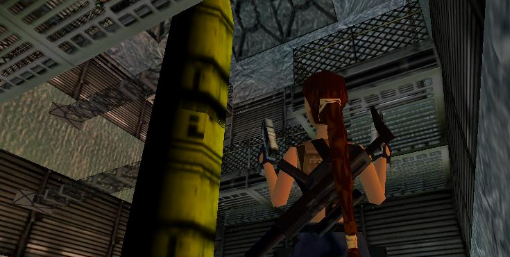The character is an icon. A heroine of the nineties. Yet games have moved on since then, companies are focusing more on the storyline and character arcs. The type of games changed leading to more variety in terms of gameplay mechanics and newer platforms allowed technology to be constantly improved upon. These changes shaped the games' reception, our expectations of them, and developer's targets. And of course this meant that Lara had to change too, after all there's only so much nostalgia can do to persuade gamers to constantly support the series.
Yet Lara never stopped changing, even with Angel of Darkness, the game which to many acted as the catalyst for the sudden change in series' direction. In the first few games, Core tried hard to expand Lara's adventures by giving the player more variety in terms of locations and outfits.The fourth instalment, The Last Revelation, was more of a story-driven adventure and the same could easily be said for Angel of Darkness with the focus being on a more dark, gothic atmosphere and storyline.In 2006, Legend began the trilogy which later included Anniversary and Underworld where, once again, the story was the main factor. The gaming industry became interesting in more emotional and relatable characters, and this is something that Tomb Raider mirrored in their games. But then in 2010 came what I believe is the turning point and the main catalyst for the franchise reboot.
 |
| Lara from Tomb Raider 3, armed with three guns, inside a missile silo. |
Fan support is perhaps the most crucial aspect for any game company; it's what either makes or breaks a game. Even the most beautifully designed, story-driven wonder won't make it if there isn't a fanbase. There are two main points in game developing when you can take risks, the first is when the company is initially created, and the second is when you have a fanbase who will support your ideas. In 2003, it was Core Design's year to experiment. In 2010, it was Crystal Dynamics'; that was the year that Crystal decided to split their company into two groups and begin focusing on their debut arcade game entitled Lara Croft and the Guardian of Light. As Lara said in the game; "It doesn't look like much, but that's another thing I learnt, appearances can be deceiving."
Lara Croft and the Guardian of Light explored new territory left undiscovered in previous titles. A multiplayer system which also featured online connectivity and the ability to play with fans around the world. A mixture of graphic novel Max-Payneesque and CGI cutscenes driving the narrative, and a points system with a levelling up as a nod to the arcade genre. This was about as far as any Tomb Raider title had gone from its origins. Of course it featured the original badass Lara Croft bringing refreshing sarcasm to a threatening situation. But it was the beginning of change. The game was a symbol of how Crystal was willing to take risks to explore the franchise, and how the community would support the ideas. It was also this game which led to the complete reboot of the series.
Naturally, and expectedly, I was nervous about the change. I was psyched about there being a new Tomb Raider, and especially at that time when I became interested in the psychological horror genre after the discovery of Alan Wake. Yet this wasn't the Lara that I saw from my childhood...Not completely anyway. The Lara before me was weaker, more dependent, more unsure in her actions and her ability and often seemingly ran on pure adrenaline rather than the build up of talent after several years of raiding. The GameInformer article shocked me greatly, as I read about the protagonist falling on the metal spike and being considerably weaker in the upcoming game. And yet in spite of this, she was still Lara Croft, still a heroine.
 |
| The new protagonist in pain after falling from a great height onto a metal spike |
The newer Lara is allowed to keep her title, in my view anyway. She may not be the gun-wielding badass lady that we've previously met, yet there's something definitely heroic about her. Her determination in the face of peril or imminent death is refreshing. And her sense of loyalty to Roth is something that has seldom been explored for her character. If placed in a similar situation, I honestly wouldn't know what to do, I like to take risks and accept challenges, but explore a potentially deadly island where I may be the only survivor walking across a beach of dead comrades? I think I'll pass.
Is Lara so different from her original incarnation? Not so much, not enough to doubt whether it's actually the same person. There has to be a catalyst or a major turning point to everyone's life whether it is as small as setting up a website or as big as moving to another country where you don't fully know the language. There had to be a point in her life where Lara was vulnerable. Even this was explored in Core's games especially in Tomb Raider Chronicles where she travels to Ireland, constantly threatened and often afraid of her surroundings.
Being more emotional and unprepared doesn't make her less of a hero, in fact it does the complete opposite. I'm willing to argue that the newer Lara is just as much as a hero perhaps even more than her previous incarnations. After all, the previous versions of Lara chose their adventure.
She's still a hero, she's just a hero for a new generation.











0 comments: